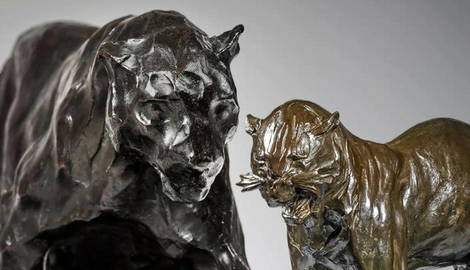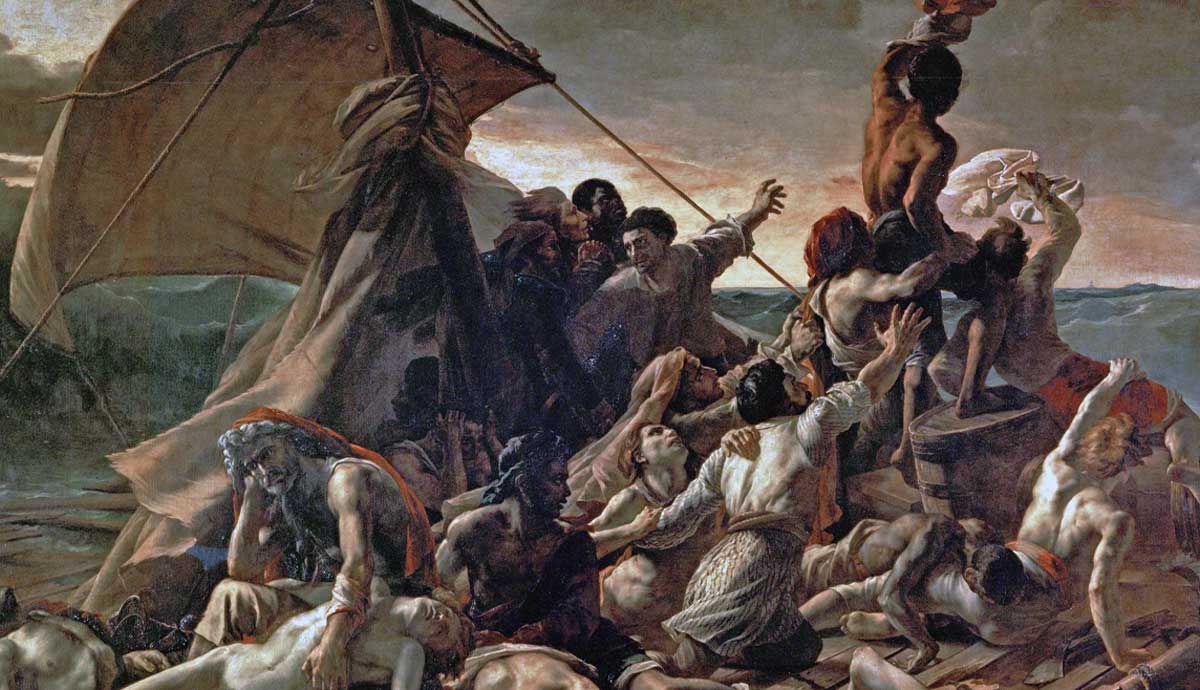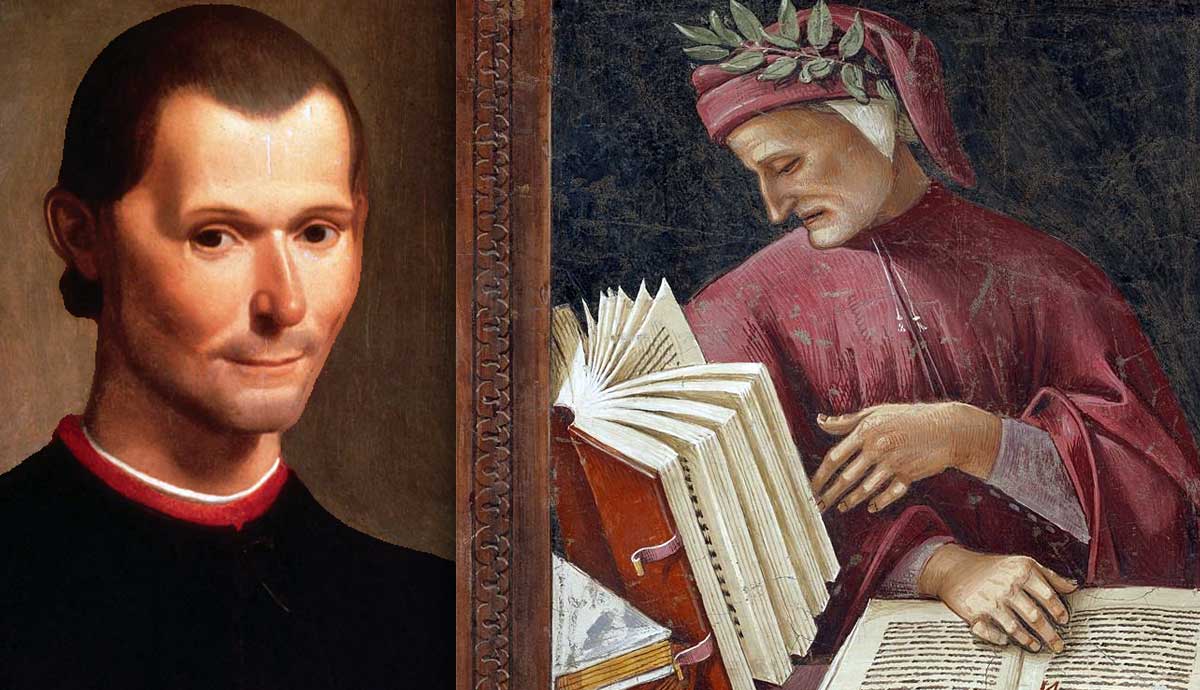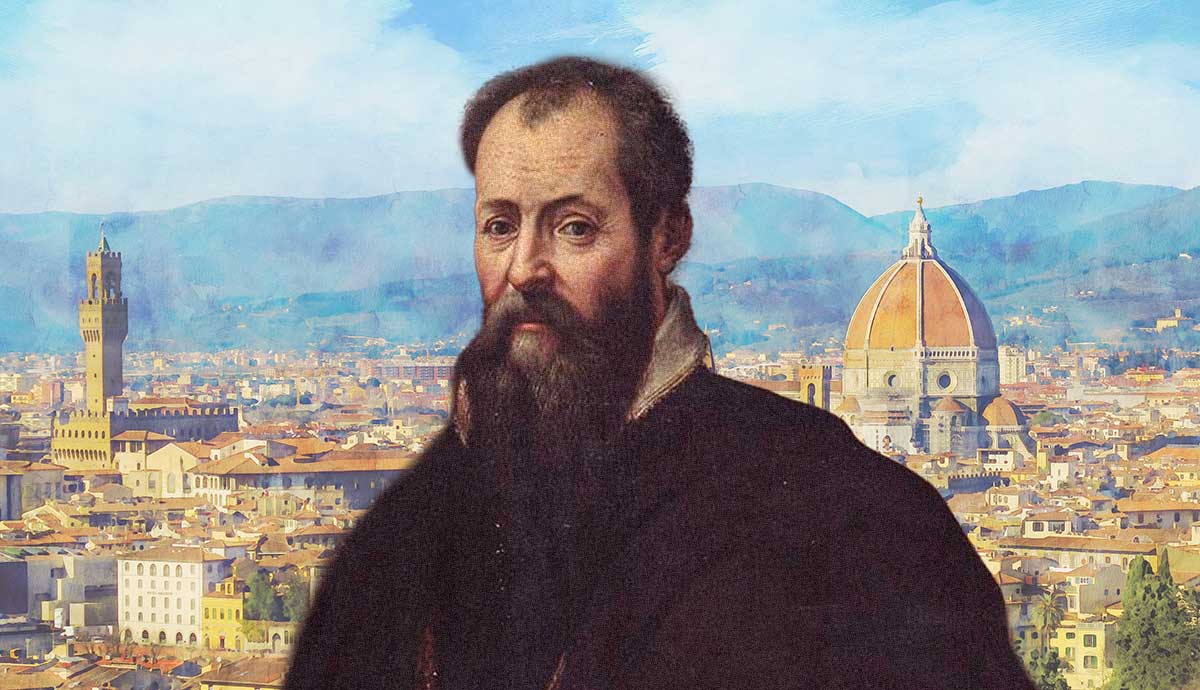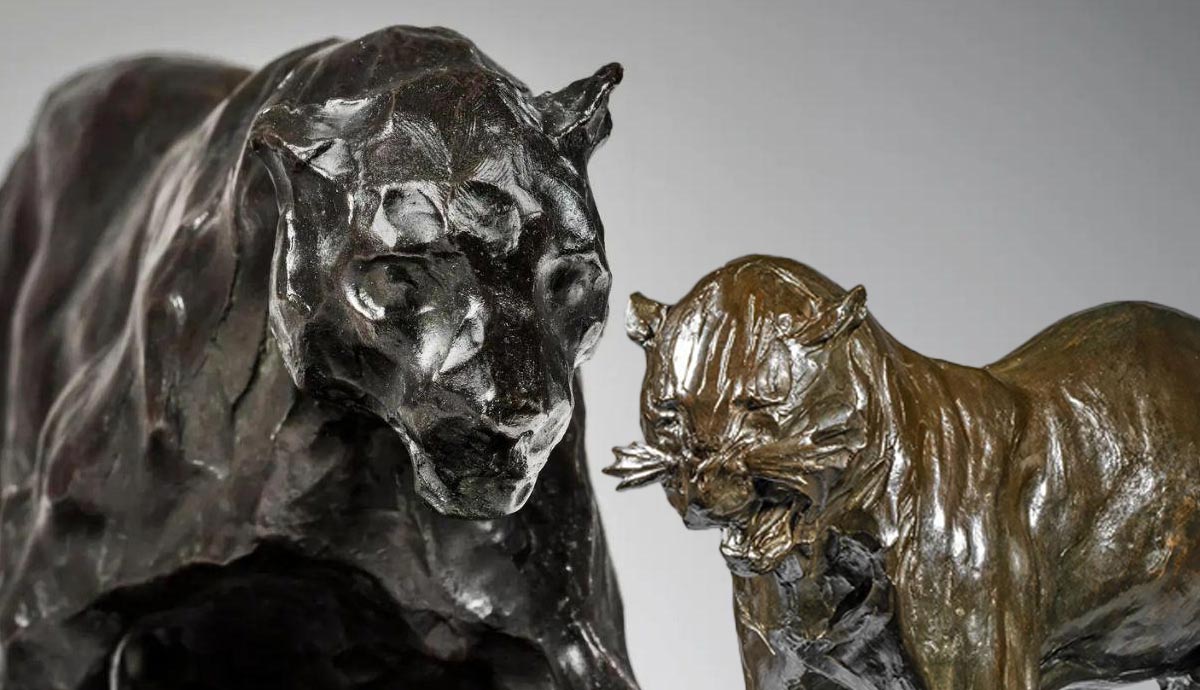
Rembrandt Bugatti was an unjustly overlooked sculptor who translated the Impressionist style from paint to cast bronze. Instead of focusing on portraiture or mythological figures, Bugatti created figures of animals he studied in the Antwerp Zoo. His art was popular and almost universally liked, and for that reason, he was barely included in the art historical canon. Bugatti was so attached to the animals he sculpted that he committed suicide soon after some of them died during World War I food shortages. Read on to learn more about Rembrandt Bugatti.
Rembrandt Bugatti: The Star of Impressionist Sculpture

Impressionism is an art movement mostly associated with painting. It explored the subtle nuances of light and shadow and focused on fluid and short-lived impressions of the scene rather than its photographic reality. That said, Impressionism was still true to the physical world, although it expanded its creative language with expressive brushwork and loud color.
By definition, sculpture is a heavyweight medium known for its permanence. In the early decades of Impressionist art, sculpture was even more conservative than painting, with much stricter rules and a more rigid tradition. Still, modern artists were looking for a new expressive path that would follow the Impressionist trend in painting. Eventually, they found it: instead of visible brushwork on the surface of Impressionist works, they added texture to their sculpted materials.
Instead of polishing the surfaces or giving them realistic textures, they deliberately left their fingerprints or traces of moving hands on their clay. They also began manipulating proportions and form to better imitate the dynamics and emotional intensity. For instance, Camille Claudel’s sculpture The Waltz sacrificed its realism in favor of the passionate and dramatic whirl of the dancing couple.

Rembrandt Bugatti, in that sense, was a surprising figure even among the diverse and rather limited group of Impressionist sculptors. Instead of focusing on human figures or mythological scenes, Bugatti focused on animals, both native to Europe and brought from faraway lands. Impressionist techniques and some influences of Cubism and Expressionism made his works convey the movement and habits of animals much more accurately than photorealistic depictions.
The Bugatti Family
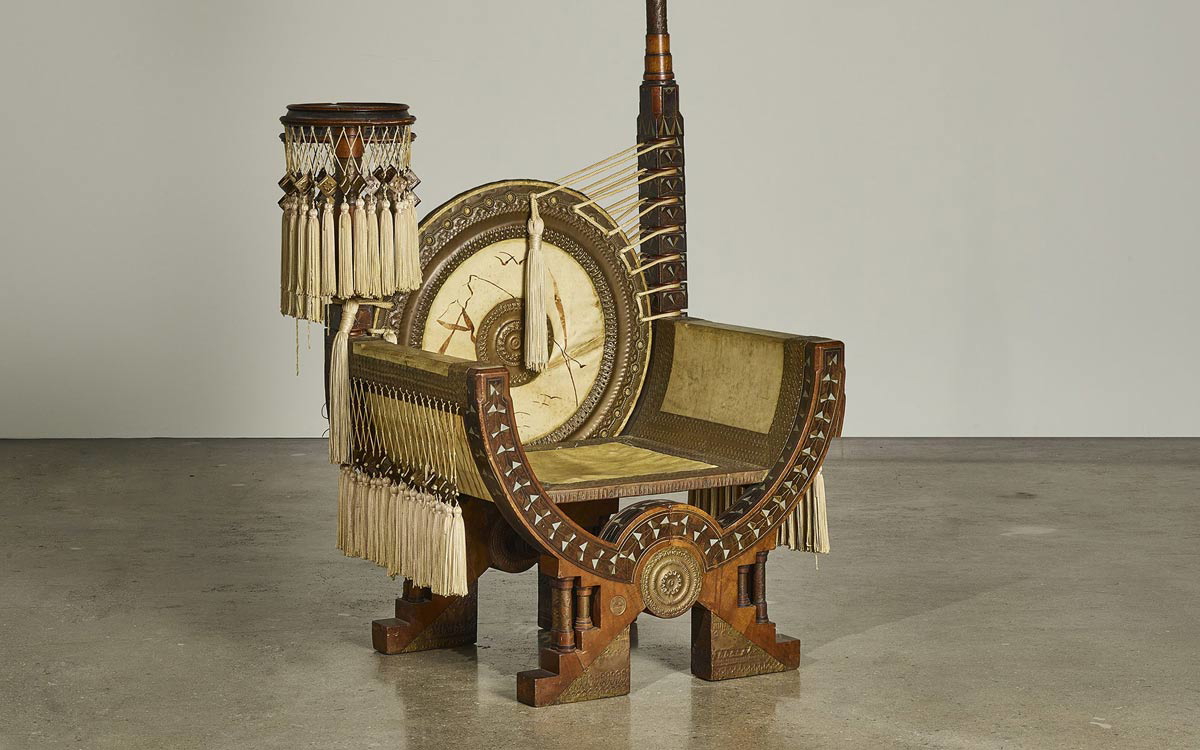
Usually, in artist’s biographies, their choice of artistic career is presented as a rebellious act against the normative expectations of their family. In Rembrandt Bugatti’s case, it was exactly the opposite: with such ancestry, he had little to no chance of becoming something other than an artist. His father, Carlo Bugatti, was a famous Art Nouveau furniture designer. He was the master of exquisite and complex pieces that blended Gothic and Oriental influences into one mystical and multifaceted whole. Today, his pieces rarely appear on auctions and are treasured by both curators and collectors. Born in Milan and raised in Paris, Rembrandt Bugatti had a diverse and artistically rich upbringing, as the social circle of his parents was composed almost entirely of artists and designers.
His uncle was Giovanni Segantini, a famous painter and a rare representative of Symbolist art in Italy. Segantini proposed the original name for the child, honoring the famous Dutch master. Segantini worked in the then-popular Divisionist technique, focusing mostly on landscapes.
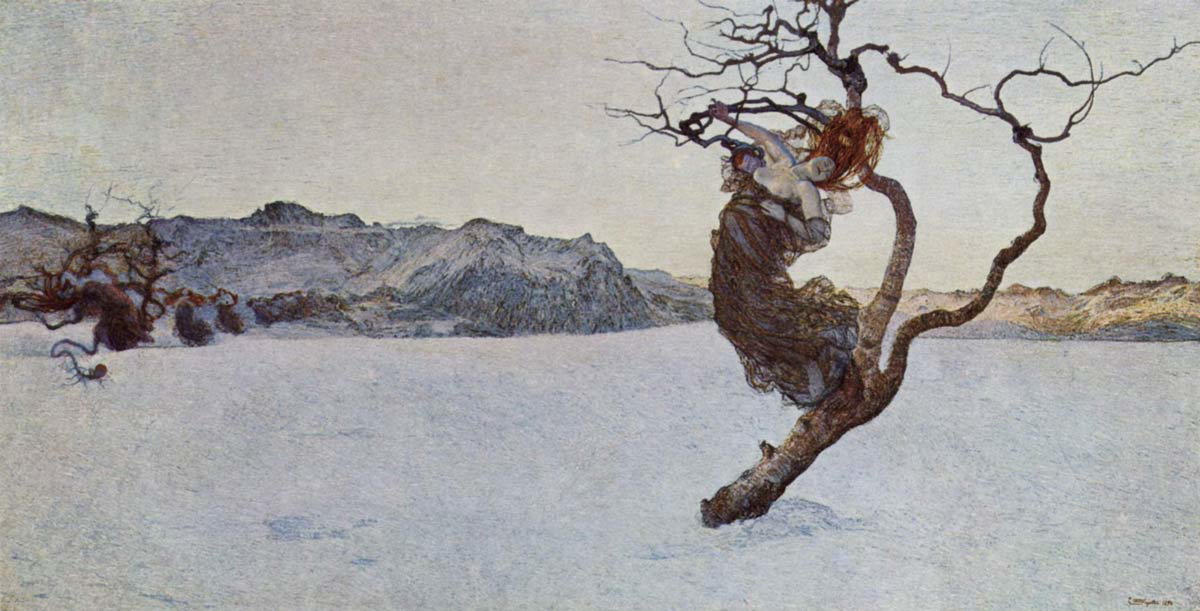
However, the most definitive influence on the young artist came from his father’s friend, a sculptor of Russian origin, Paolo Troubetzkoy. Troubetzkoy was also an Impressionist who focused on sculptural portraits that grasped sketchy movements and emotions. He was a convinced vegetarian and animal lover who kept a bear, a fox, and a wolf in his Saint Petersburg studio. Troubetzkoy noticed Rembrandt’s passion for art, as well as his empathetic treatment of animals, and suggested he tried to make a career from it.
Another prominent figure in the Bugatti family was Rembrandt’s older brother Ettorio, the founder of the eponymous car brand. Several years after Rembrandt Bugatti’s death, Ettore adopted one of his elephant sculptures as the mascot for one of his premium car models, which is still used by the brand today.
Rembrandt Bugatti’s Career

Inspired by his friends and family, Bugatti began his studies at the Brera Academy of Art in Milan at the age of sixteen. Just three years later, he established his reputation and was selected as one of the artists represented at the 1903 Venice Biennale.
In 1904, the entire Bugatti family moved to Paris, settling at the center of global artistic evolution. There, Rembrandt Bugatti expanded his knowledge of modern forms and ideas and also found another source of inspiration in the Jardin des Plantes, a botanical garden in Paris that was also famous for its menagerie of exotic animals. There, he observed animals like apes, seals, bears, and reptiles. He spent hours and days next to the animals, studying their behaviors and movements. Soon, his works became popular among his contemporaries.
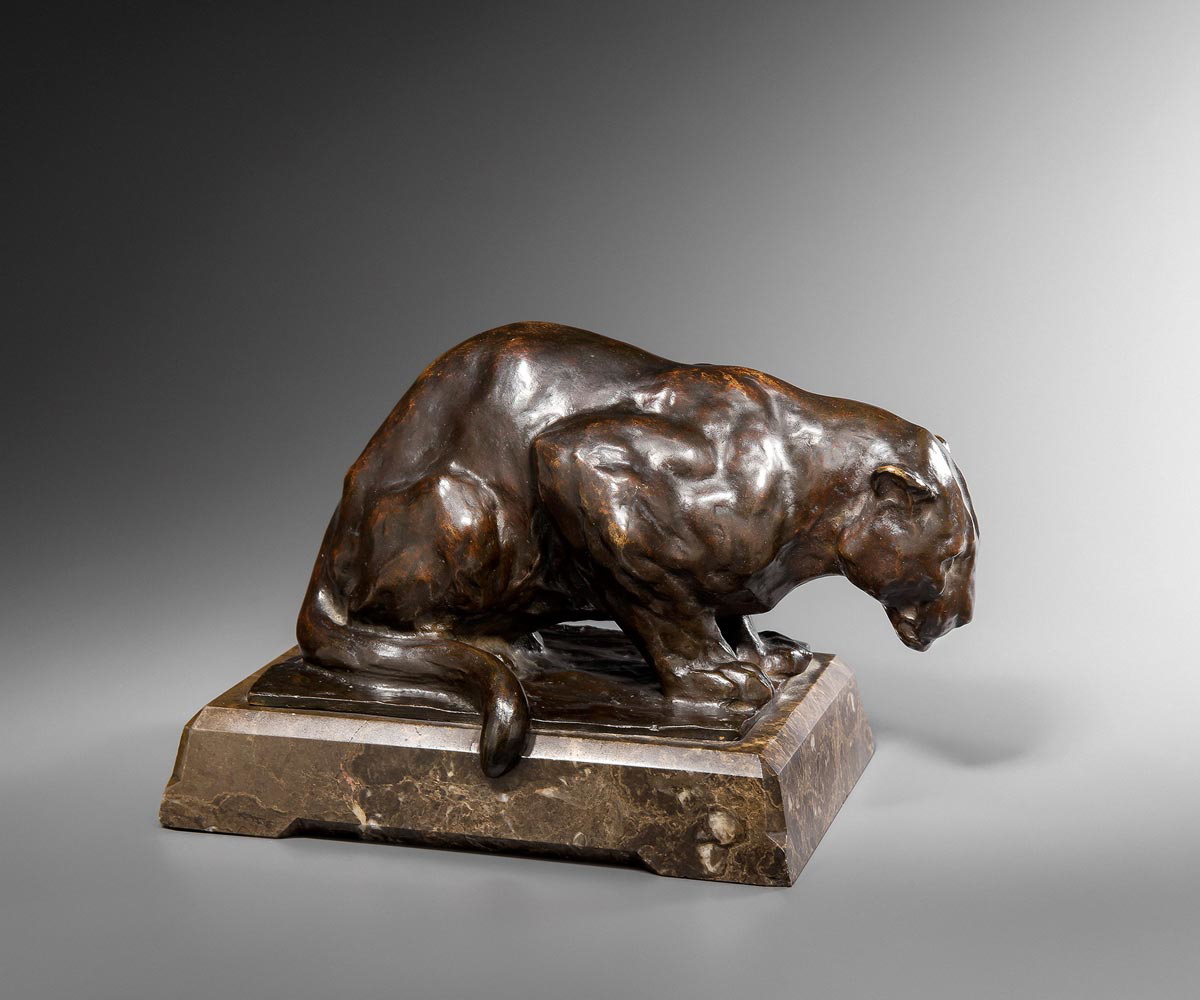
Rembrandt Bugatti’s work was never too complex or too daring to shock his viewers. It was safe, conventionally pleasing, and well-balanced. At the same time, it acted as a bridge between a wider audience and avant-garde artists. By using progressive Impressionist vocabulary for the conservative medium of marble and bronze sculpture, Bugatti legitimized the style, introducing it in its most beginner-friendly form. Still, he never sacrificed artistic expression for the sake of pleasing the crowd. His figures reflected careful observation and empathetic treatment of animals and were emotionally charged and captivating. However, for decades after his death, Bugatti was excluded from art historical canons, particularly for the universal appeal of his works.
Antwerp Zoo
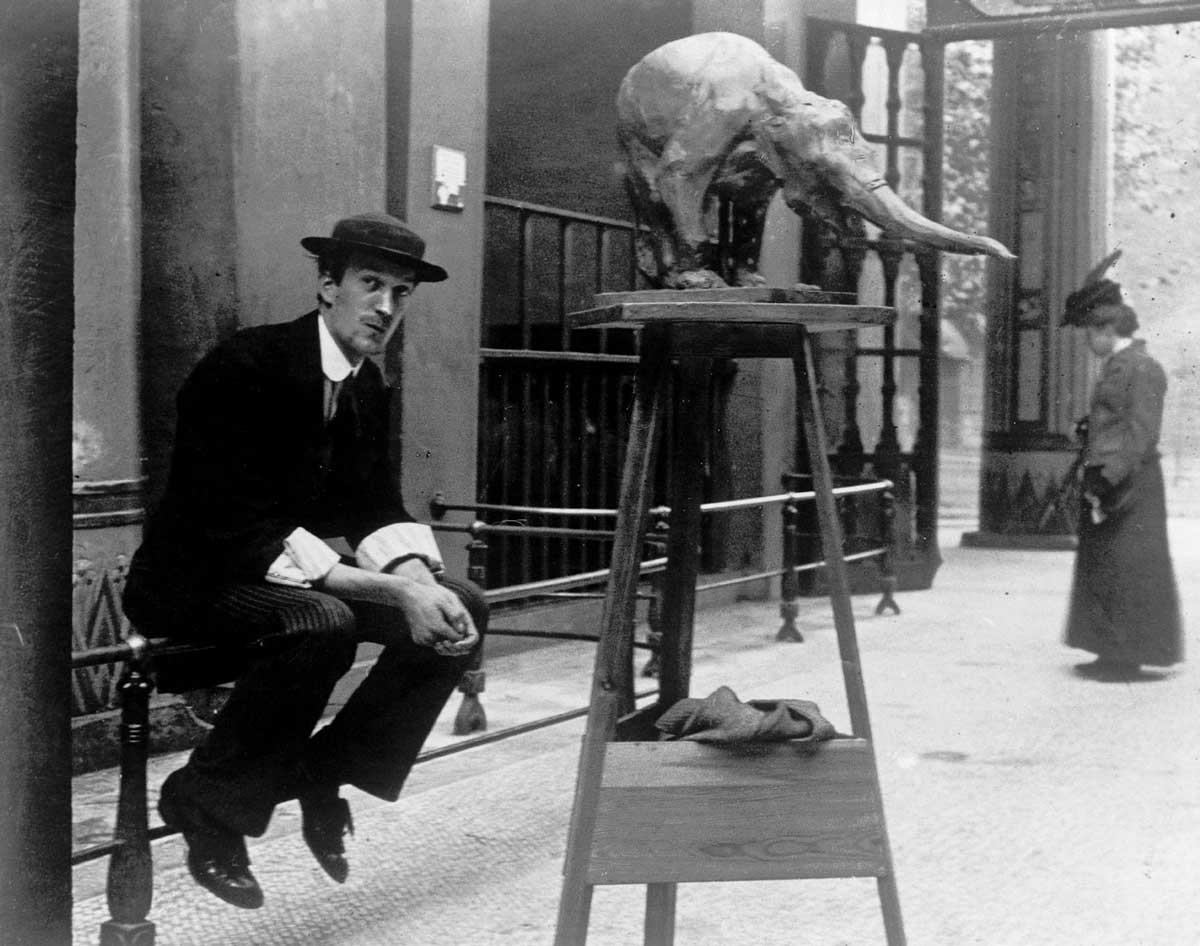
The most important location in Bugatti’s career was not Paris but Antwerp, particularly its zoological garden. The Antwerp Zoo was a unique space with a remarkable collection of animals and unusual architecture. It was also rapidly developing and presented ideal opportunities for an artist like Bugatti to observe the animals. He mostly worked on plein-air, creating clay models of the animals either near or right inside their enclosures.
Bugatti’s deep love for animals allowed him to get close to them and study them meticulously, noting not only their physique but also their characters. In a letter to his brother Ettorio, he instructed him to “love his wife, be mean to men and kind to animals.” Antwerp was also where Bugatti diversified his creative vocabulary, adopting Cubist influences into his work. Particularly notable in his sculptures of apes, such strict geometry contributed to the expressive and charismatic depiction of beings even more.

Even today, the Antwerp Zoo is an exemplary institution where animals enjoy more freedom than visitors, and endangered species have a chance to breed and develop safely. The Zoo balances preserving historically important pavilions (such as the Egyptian temple used to house elephants and the Greek one inhabited by reptiles) with maintaining modern ethical standards for research and conservation. It is one of the oldest functioning zoos in the world.
The Tragic End of Rembrandt Bugatti’s Life

Unfortunately, almost a decade of Bugatti’s collaboration with the famous Zoo was over instantly. World War I hit the Antwerp Zoo shockingly hard. After the first city bombing, the lions escaped their enclosure. In the following months, some animals were killed in air attacks, and some ran away. As the food shortages hit the city, the administration had to make the difficult decision of killing some of the animals to stop their suffering from starvation and air raid-related wounds. Later, in attempts to preserve at least some of their biological diversity, zookeepers were forced to feed birds of prey with smaller animals that were still left at the Zoo. After the war was over, the Zoo was left with just 19% of its pre-war animal population, with the majority of surviving species being fish.
During the war, Rembrandt Bugatti volunteered as a paramedic at a military hospital in Antwerp. This experience alone traumatized him enough, and he descended into a deep depression. Upon learning about the fate of his favorite zoo animals, he fled to Paris in December 1915. Several months later, he committed suicide in his studio in Montmartre. His final work was atypical; it was a bronze sculpture of Jesus on the cross.
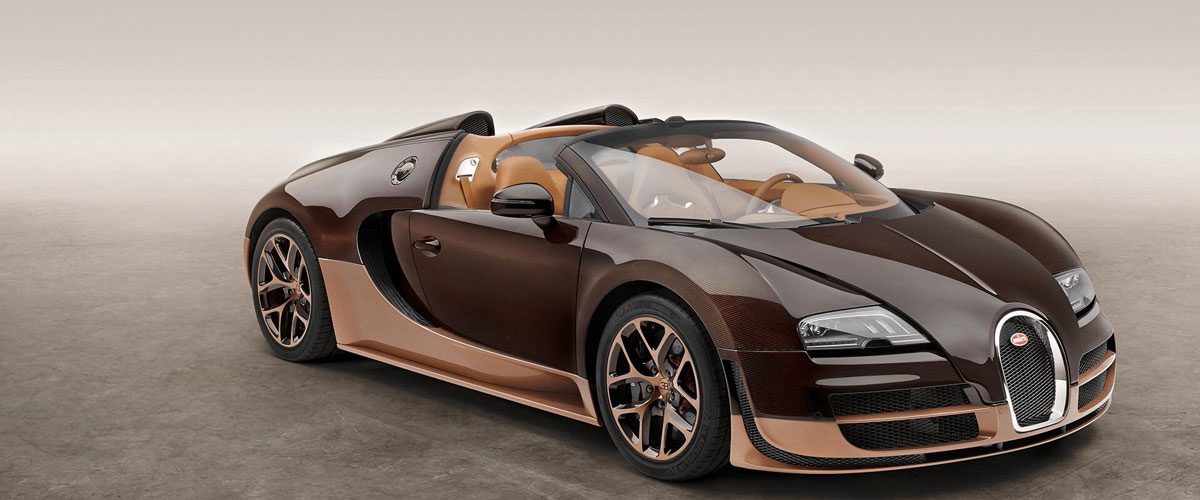
Today, Rembrandt Bugatti is an artist sought after by art collectors but mostly ignored in major art historical publications. One of the most prominent collectors of Rembrandt Bugatti’s work was the late actor Alain Delon. Apart from bronze sculptures of elephants, gazelles, lions, deer, and dogs, Delon had truly unique pieces, not as typical for Bugatti’s career—three sculptures of nude women in marble. Bugatti’s works are still integral to the eponymous car brand design and appear on special edition models.
